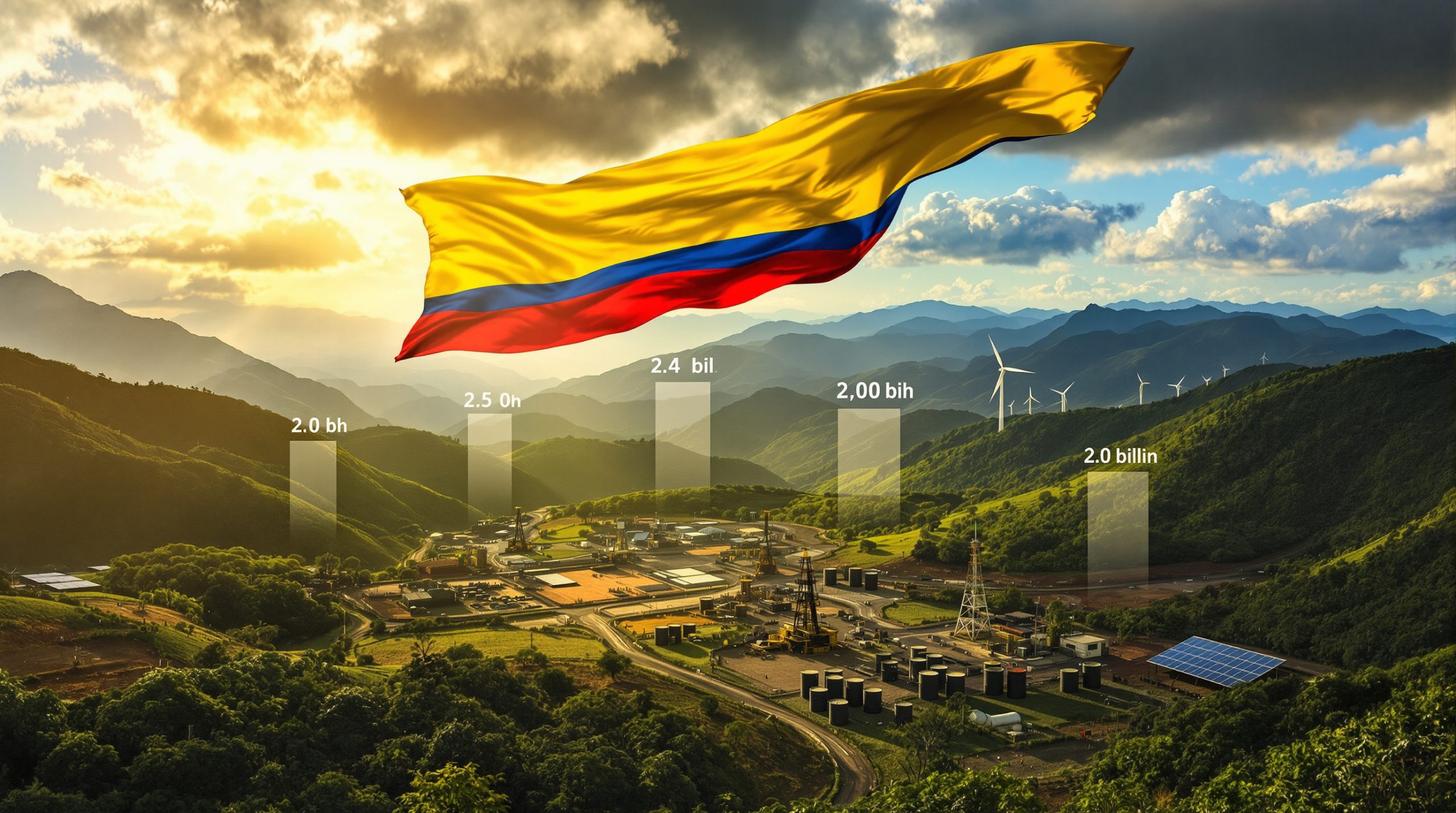What Makes a Lithium Mine "Top-Tier" in Today's Market?
The global lithium landscape has transformed dramatically as battery demand accelerates worldwide. When evaluating the world's premier lithium operations, several critical factors distinguish industry leaders from smaller players.
Production capacity remains the primary metric, with top-tier facilities targeting substantial annual output of lithium carbonate equivalent (LCE). Reserve size provides long-term sustainability, while extraction efficiency determines profitability in volatile markets.
Geographic diversification has become increasingly important as supply chain resilience takes center stage. Operations spanning multiple continents reduce dependency risks for battery manufacturers and automotive companies seeking reliable sources.
Key Performance Indicators for Lithium Operations
| Ranking Factor | Industry Focus | Strategic Importance |
|---|---|---|
| Annual LCE Production | High-volume output | Market supply contribution |
| Proven Reserves | Multi-million tonne deposits | Long-term viability |
| Production Cost | Cost optimisation | Profitability margins |
| Processing Technology | Advanced extraction methods | Environmental impact |
10. Cauchari-Olaroz Lithium Project, Argentina
Located in Argentina's renowned Lithium Triangle, the Cauchari-Olaroz operation represents a significant milestone in South American lithium development. This high-altitude brine operation commenced commercial production in 2022, utilising the region's unique geological advantages.
Ownership structure includes major international partnerships that combine technical expertise with regional knowledge. The project benefits from Argentina's established lithium infrastructure and favourable mining regulations that support foreign investment.
Production advantages stem from high-grade brine concentrations that exceed regional averages, enabling efficient extraction processes. Solar evaporation ponds utilise the area's exceptional climate conditions for cost-effective processing methods.
Strategic Market Position
The operation's location provides direct access to Asian markets through Chilean ports, reducing transportation costs for battery-grade lithium carbonate. Furthermore, argentinian lithium insights reveal expansion plans demonstrating the scalability potential of Argentine lithium resources.
9. Wodgina Lithium Mine, Australia
Western Australia's Wodgina facility stands as one of the world's largest hard-rock lithium operations, representing significant spodumene concentrate production capacity. The mine's strategic importance extends beyond production volume to its role in global supply chain security.
Joint venture partnerships combine international processing expertise with local mining excellence. The operation utilises conventional open-pit methods to extract high-grade spodumene ore from proven reserves.
Processing capabilities include on-site beneficiation to produce concentrated lithium oxide, meeting specifications for downstream conversion facilities. The mine's proximity to Port Hedland enables efficient export logistics to global markets.
Expansion and Future Outlook
Current development phases target substantial increases in annual spodumene production capacity. In addition, the operation's integration with global processing networks provides vertical supply chain advantages for international battery manufacturers, benefiting from australia lithium innovations in the sector.
8. Thacker Pass Lithium Project, Nevada
Nevada's Thacker Pass represents one of the largest lithium deposits in the United States, addressing North American supply security concerns while supporting domestic battery manufacturing initiatives.
Development leadership focuses on clay-based extraction technologies that process lithium-bearing sediments through innovative methods. The operation targets substantial annual LCE production to serve domestic markets.
Strategic significance extends beyond production metrics to geopolitical supply chain considerations. The project provides critical mineral independence for U.S. automotive and energy storage industries facing increasing demand. However, thacker pass production continues to face regulatory and environmental challenges.
Environmental and Technological Innovation
Advanced processing methods minimise water consumption compared to traditional brine operations, addressing environmental concerns in arid regions. The project incorporates renewable energy sources to reduce carbon footprint throughout extraction processes.
7. Pilgangoora Lithium Mine, Australia
Pilbara Minerals' Pilgangoora operation has established itself as a cornerstone of Australia's lithium industry, demonstrating consistent spodumene concentrate production. The mine's strategic partnerships with Asian battery manufacturers ensure reliable demand channels.
Operational excellence stems from continuous optimisation of mining and processing methods developed through years of experience. The facility processes millions of tonnes of ore annually through advanced beneficiation systems.
Market integration includes comprehensive offtake agreements with major battery manufacturers, providing revenue stability and long-term growth visibility. The operation's proven track record attracts continued investment for expansion phases.
Downstream Integration Opportunities
Recent developments include potential conversion facility partnerships to produce battery-grade lithium hydroxide. These initiatives would capture additional value along the lithium supply chain while serving regional markets.
6. Salar de Olaroz, Argentina
The Salar de Olaroz operation demonstrates the potential of Argentina's lithium brine resources through established production methods. The facility's strategic location in Jujuy Province provides access to proven mining infrastructure.
Brine processing expertise developed over multiple decades enables efficient extraction from complex geological formations. Solar evaporation ponds utilise natural climate advantages to concentrate lithium-rich brines cost-effectively.
Quality advantages include high-purity lithium carbonate production meeting stringent battery-grade specifications. The operation's established market relationships provide stable revenue streams and customer loyalty.
Expansion and Optimisation
Current development projects target increased production capacity through enhanced evaporation pond systems and processing improvements. Consequently, optimisation efforts focus on reducing production timelines while maintaining exceptional product quality standards.
5. Salar del Hombre Muerto, Argentina
The Salar del Hombre Muerto operation has pioneered commercial lithium production in Argentina since 1997, establishing foundational expertise in South American brine extraction. The facility demonstrates consistent annual LCE production from high-grade resources.
Technical innovation includes direct lithium extraction technologies that reduce environmental impact while increasing recovery rates. The operation's decades of experience provide invaluable operational knowledge for industry development.
Strategic partnerships with global battery manufacturers ensure consistent demand for high-quality lithium carbonate and lithium hydroxide products. For instance, the facility's established infrastructure supports reliable production schedules alongside geothermal lithium extraction initiatives emerging in other regions.
Sustainability Leadership
Environmental management programmes include comprehensive water recycling and wildlife protection initiatives. The operation demonstrates sustainable lithium production practices in sensitive ecosystems, setting industry standards.
4. Mount Marion Lithium Mine, Australia
The Mount Marion operation represents successful international collaboration in Australian lithium mining, producing substantial spodumene concentrate annually. This Western Australian mine exemplifies efficient hard-rock lithium extraction methods.
Processing efficiency stems from advanced beneficiation technologies that maximise lithium recovery from spodumene ore deposits. The operation maintains consistent product quality for downstream conversion facilities across global markets.
Strategic location near established mining infrastructure reduces operational costs while providing access to skilled workforce and comprehensive support services. Export logistics through regional ports enable efficient global market access.
Operational Optimisation
Continuous improvement programmes focus on increasing throughput while reducing unit costs through technological advancement. The operation's integration with global supply chains provides market stability and customer diversification.
3. Talison Lithium Greenbushes, Australia
The Greenbushes operation stands as the world's largest hard-rock lithium mine, demonstrating exceptional spodumene concentrate production capacity. This Western Australian facility has operated continuously since 1985, establishing unmatched expertise in lithium extraction.
International partnerships combine Asian market access with global processing capabilities, creating synergistic advantages. The operation's scale advantages enable industry-leading cost structures and operational efficiency.
Resource quality includes some of the world's highest-grade spodumene deposits, with ore grades significantly exceeding industry averages. Multiple processing trains ensure production reliability and operational flexibility during maintenance periods.
Expansion and Integration
Current development phases target substantial increases in annual concentrate capacity through systematic expansion. Downstream integration projects include lithium hydroxide conversion facilities to capture additional value along the supply chain.
2. Salar de Atacama, Chile
The Salar de Atacama operation represents the world's most established lithium brine facility, demonstrating consistent large-scale production for over three decades. This Chilean operation has supplied global markets through multiple economic cycles.
Brine quality advantages include exceptional lithium concentrations and favourable evaporation conditions in the Atacama Desert's unique climate. The operation's established infrastructure supports reliable, large-scale production capabilities.
Market leadership stems from decades of operational optimisation and customer relationship development across diverse industries. The facility produces both lithium carbonate and lithium hydroxide for specialised applications.
Sustainability and Innovation
Advanced brine management systems minimise environmental impact while maximising lithium recovery through technological innovation. The operation continues investing in process improvements to maintain competitive advantages in evolving markets.
1. Zabuye Salt Lake, China
Tibet's Zabuye Salt Lake operation demonstrates China's strategic commitment to lithium supply security through domestic resource development. This high-altitude brine facility utilises unique geological conditions for efficient extraction processes.
Geological advantages create exceptional lithium concentrations in brine resources, enabling cost-effective extraction through proven methods. The operation's strategic importance extends beyond commercial considerations to national resource independence.
Integrated supply chain connects directly to China's battery manufacturing ecosystem, providing logistical advantages and supply reliability. Furthermore, the facility's continued development supports domestic electric vehicle growth and energy storage applications, contributing to global battery-grade lithium refinery developments.
Strategic Significance
The operation's role in China's lithium supply chain independence demonstrates the intersection of resource development and national policy. Continued expansion ensures domestic battery manufacturers maintain competitive positioning in global markets.
How Do These Operations Shape Global Lithium Supply?
The world's premier lithium mines collectively represent a substantial portion of global supply, creating both opportunities and risks for battery manufacturers and automotive companies. This concentration requires careful supply chain management strategies.
Geographic distribution spans four continents, with Australia and South America dominating hard-rock and brine production respectively. China's growing domestic production reduces import dependencies while supporting internal demand growth.
Supply chain resilience requires diversification across multiple operations and extraction methods to mitigate risks. Companies increasingly pursue partnerships with multiple producers to ensure consistent material access during market volatility.
Future Production Outlook
Industry projections indicate substantial lithium demand growth through 2030, requiring significant capacity expansion across existing operations and new project development. The facilities profiled here will play crucial roles in meeting this unprecedented demand.
Current expansion projects across these operations target combined capacity increases that could substantially impact global supply availability. However, development timelines and regulatory approvals remain critical factors affecting actual production schedules.
What Investment Opportunities Exist in Lithium Mining?
The lithium mining sector presents diverse investment opportunities across different risk profiles and market exposures. Direct equity positions in major producers provide exposure to commodity price movements and operational performance metrics.
Exchange-traded funds focused on battery metals offer diversified exposure to the lithium supply chain while reducing single-company risks. These investment vehicles capture sector growth trends through professional portfolio management.
Private equity opportunities exist in emerging lithium projects, though these investments require specialised knowledge and higher risk tolerance. Due diligence must evaluate technical feasibility, regulatory approval processes, and market access capabilities.
Risk Considerations
Lithium investments face multiple risk factors that investors must carefully evaluate:
• Commodity price volatility affects profitability and project economics
• Regulatory changes impact development timelines and operational costs
• Technological disruption could alter extraction methods and cost structures
• Environmental regulations increasingly influence project approval processes
• Geopolitical tensions affect international supply chain stability
Market psychology plays a significant role in lithium sector valuations, with investor sentiment often amplifying price movements beyond fundamental factors. Understanding cyclical demand patterns and technological adoption rates helps inform investment timing decisions.
Understanding Lithium Extraction Technologies
Modern lithium extraction employs diverse technological approaches depending on deposit characteristics and environmental constraints. Hard-rock mining utilises conventional open-pit methods followed by complex beneficiation processes to produce spodumene concentrate.
Brine extraction relies on solar evaporation ponds that concentrate lithium-rich solutions over extended periods. This method requires specific climatic conditions and substantial land areas but offers lower operational costs in suitable environments.
Direct lithium extraction represents emerging technology that could revolutionise brine processing by reducing water consumption and extraction timelines. These methods show promise for environmentally sensitive locations.
Geological Factors and Mineral Quality
Lithium deposit quality varies significantly based on geological formation processes and mineral composition. Spodumene deposits typically contain 1-3% lithium oxide, with higher grades providing superior economics but requiring specialised processing expertise.
Brine concentrations range from 200-1,000 milligrams per litre of lithium, with higher concentrations enabling more efficient extraction. Evaporation rates depend on altitude, temperature, and humidity conditions specific to each location.
Clay deposits present unique extraction challenges but offer potential for large-scale production in regions lacking traditional lithium resources. Processing costs remain higher than conventional methods but continue declining through technological advancement.
Regulatory Landscape and Environmental Considerations
Lithium mining operations face increasingly complex regulatory requirements across multiple jurisdictions. Environmental impact assessments now require comprehensive water usage analysis and wildlife protection measures.
Indigenous land rights affect project development in several key regions, requiring extensive community consultation and benefit-sharing agreements. These processes can significantly impact development timelines and operational costs.
Water rights management becomes critical for brine operations in arid regions where agriculture and local communities compete for limited resources. Sustainable extraction practices increasingly influence operational licensing.
International Trade Policies
Export restrictions and tariff policies affect lithium trade flows between producing and consuming nations. China's position as both major producer and consumer creates unique market dynamics affecting global pricing.
Critical mineral strategies in developed nations increasingly emphasise domestic supply chain security, potentially altering traditional trade patterns. These policies could drive investment toward previously uneconomic deposits in strategic locations.
How Do Major Mining Companies Restructure for Growth?
The mining industry continues evolving through strategic restructuring initiatives designed to optimise operational efficiency and unlock shareholder value. Major mining companies regularly evaluate their organisational structures to ensure competitive positioning in rapidly changing commodity markets.
Operational streamlining has become a priority as companies seek to reduce administrative layers and improve decision-making processes. These initiatives often involve consolidating divisions and eliminating redundant management positions to create more agile organisations.
Recent industry developments demonstrate how Rio Tinto's corporate restructuring plans aim to address structural inefficiencies while maintaining operational excellence. Such restructuring efforts typically focus on simplifying reporting lines and accelerating project development timelines.
Strategic Focus Areas
Mining companies increasingly prioritise resource allocation toward high-return projects while divesting non-core assets. This strategic approach enables management teams to concentrate expertise and capital on operations with the greatest potential for value creation.
Furthermore, mining industry transformation efforts reflect broader trends toward digitalisation and operational optimisation that characterise modern mining companies' approaches to sustainable growth.
Market Psychology and Investment Timing
Lithium markets exhibit cyclical behaviour driven by supply-demand imbalances and speculative investment flows. Price volatility creates both opportunities and risks for mining companies and investors seeking optimal entry points.
Technology adoption curves for electric vehicles and energy storage systems directly influence lithium demand projections. Market participants must evaluate both current fundamentals and future growth scenarios when making investment decisions.
Inventory cycles in the supply chain create temporary demand fluctuations that can obscure underlying market trends. Understanding these patterns helps differentiate between structural and cyclical market movements.
Speculative Considerations
Several speculative factors could dramatically alter lithium market dynamics:
• Alternative battery technologies might reduce lithium intensity requirements
• Recycling advancement could create secondary supply sources
• New deposit discoveries might shift regional production advantages
• Geopolitical developments could disrupt established supply chains
• Climate policies might accelerate or decelerate demand growth
These speculative elements require ongoing monitoring as they could significantly impact long-term investment returns and operational viability of current projects.
Conclusion: The Future of Global Lithium Production
The world's premier lithium operations continue evolving to meet unprecedented battery demand growth driven by global electrification trends. From Australia's established hard-rock mines to South America's expansive brine operations, these facilities form the foundation of the energy transition.
Technological advancement drives operational efficiency improvements while addressing environmental concerns through innovative extraction methods. Direct lithium extraction and enhanced beneficiation processes promise to transform industry cost structures and environmental impact.
Supply chain integration becomes increasingly important as battery manufacturers seek reliable, sustainable lithium sources with predictable pricing. Long-term partnerships between miners, processors, and end-users create value throughout the supply chain while ensuring material security.
Strategic considerations extend beyond traditional mining metrics to encompass geopolitical security, environmental sustainability, and technological adaptability. The lithium mining industry's evolution reflects broader trends toward electrification and sustainable energy systems that will define global economic development.
Disclaimer: This article contains forward-looking statements and projections about lithium demand, production capacity, and market dynamics. Actual results may differ materially from these projections due to various factors including technological changes, regulatory developments, and market conditions. Investment decisions should be based on comprehensive due diligence and professional financial advice.
Further Exploration:
Readers interested in learning more about global lithium mining developments can explore additional industry analysis through specialised mining publications, commodity research firms, and official company reports that provide ongoing coverage of the lithium sector and battery materials markets.
Looking to Capitalise on Emerging Lithium Opportunities?
Discovery Alert's proprietary Discovery IQ model delivers instant notifications on significant ASX mineral discoveries, including lithium breakthroughs that could reshape the market landscape. Subscribers gain access to actionable insights that transform complex mining announcements into clear investment opportunities, helping identify the next potential breakthrough before broader market recognition occurs. Begin your 30-day free trial today to secure your market-leading advantage in the rapidly evolving resources sector.




